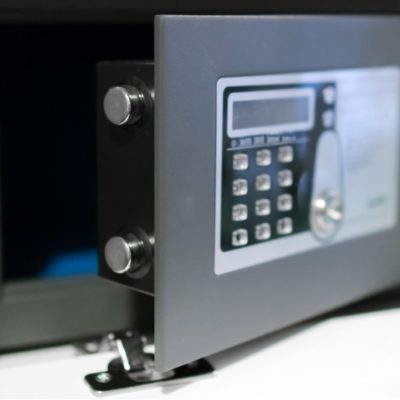Some Known Factual Statements About Commercial Safes
Table of ContentsThe Buzz on Perth Gun SafesA Biased View of Cash Tins PerthHow Commercial Safes can Save You Time, Stress, and Money.

The is a framework for assisting make choices about making efficient use of data which is personal or delicate. It is mainly used to describe or create research study access to statistical information held by federal government firms, and by information archives such as the UK Data Service. Two of the 5 Safes describe analytical disclosure control, therefore the 5 Safes is normally utilized to contrast statistical and non-statistical controls when comparing information management choices.
The combination of the controls leads to 'safe use'. These are most typically expressed as concerns, for instance: Safe projects Is this usage of the information appropriate? Safe individuals Can the users be depended utilize it in a proper way? Safe settings Does the access facility limit unauthorised use? Safe information Exists a disclosure danger in the information itself? Safe outputs Are the statistical results non-disclosive? These dimensions are scales, not limitations.
For instance, a public use file readily available for open download can not control who uses it, where or for what purpose, and so all the control (defense) must remain in the data itself. In contrast, a file which is just accessed through a safe environment with accredited users can include really sensitive information: the non-statistical controls permit the data to be 'risky'.
There is no 'order' to the Five Safes, because one is always more essential than the others. Nevertheless, Ritchie argued that the 'managerial' controls (jobs, people, setting) must be resolved before the 'statistical' controls (data, output). chubb security safes. The 5 Safes principle is associated with other subjects which developed from the exact same program at ONS, although these are not always carried out.

The Greatest Guide To Home Office Safes
This discussion follows the idea of 'information as a residual', along with information protection laws of the time which frequently characterised data simply as confidential or not anonymous. A comparable concept had actually already been developed individually in 2001 by Chuck Humphrey of the Canadian RDC network, the 'continuum of gain access to'.
The 5 Safes was designed in the winter season of 2002/2003 by Felix Ritchie at the UK Workplace for National Statistics (ONS) to explain its safe remote-access Virtual Microdata Lab (VML). It was explained at this time as the 'VML Security Design'. This was embraced by the NORC information enclave, and more commonly in the US, as the 'portfolio model' (although this is now also used to describe a somewhat different legal/statistical/educational breakdown). perth safe company.
The original framework only had 4 safes (jobs, individuals, settings and outputs): the structure was used to explain extremely detailed data access through a safe environment, therefore the 'data' dimension was irrelevant. From 2007 onwards, 'safe data' was consisted of as the structure was read review used to an explain a wider series of ONS activities.
Some conversations, such as the OECD, utilize the term 'secure' instead 'safe'. However, using both these terms can trigger presentational problems: less control in a specific dimension could be seen to suggest 'risky users' or 'insecure settings', for example, which sidetracks from the main message. Hence, the Australian government utilizes the term "five information sharing concepts".
There is no referral to the Five Safes or any associated literature. The Australian version was required to include recommendations to the 5 Safes, and provided it as an option without remark. The structure has had three usages: pedagogical, descriptive, and style. The latter is a relatively current advancement. The very first significant usage of the framework, besides internal administrative use, was to structure researcher training courses at the UK Office for National Statistics from 2003.

Some Known Facts About Commercial Safes.
Eurostat in 2011). An early usage was to assist identify locations where ONS' still had 'irreducible risks' in its provision of safe remote gain access to. The framework is mainly utilized for personal social science data. To date it appears to have actually made little effect on medical research preparation, although it is now consisted of in the modified standards on executing HIPAA guidelines in the US, and by Cancer Research Study UK and the Health Structure in the UK.
In general the 5 Safes has been used to explain options post-factum, and to explain/justify options made, however an increasing number of organisations have actually utilized the structure to create information gain access to solutions. For description instance, the Hellenic Statistical Company established an information method built around the Five discover here Safes in 2016; the UK Health Structure used the Five Safes to create its information management and training programs.
The major style usage is in Australia: both the Australian Bureau of Stats and the Australian Department of Social Service utilized the Five Safes as an ex ante design tool. In 2017 the Australian Efficiency Commission recommended embracing a variation of the structure to support cross-government information sharing and re-use.